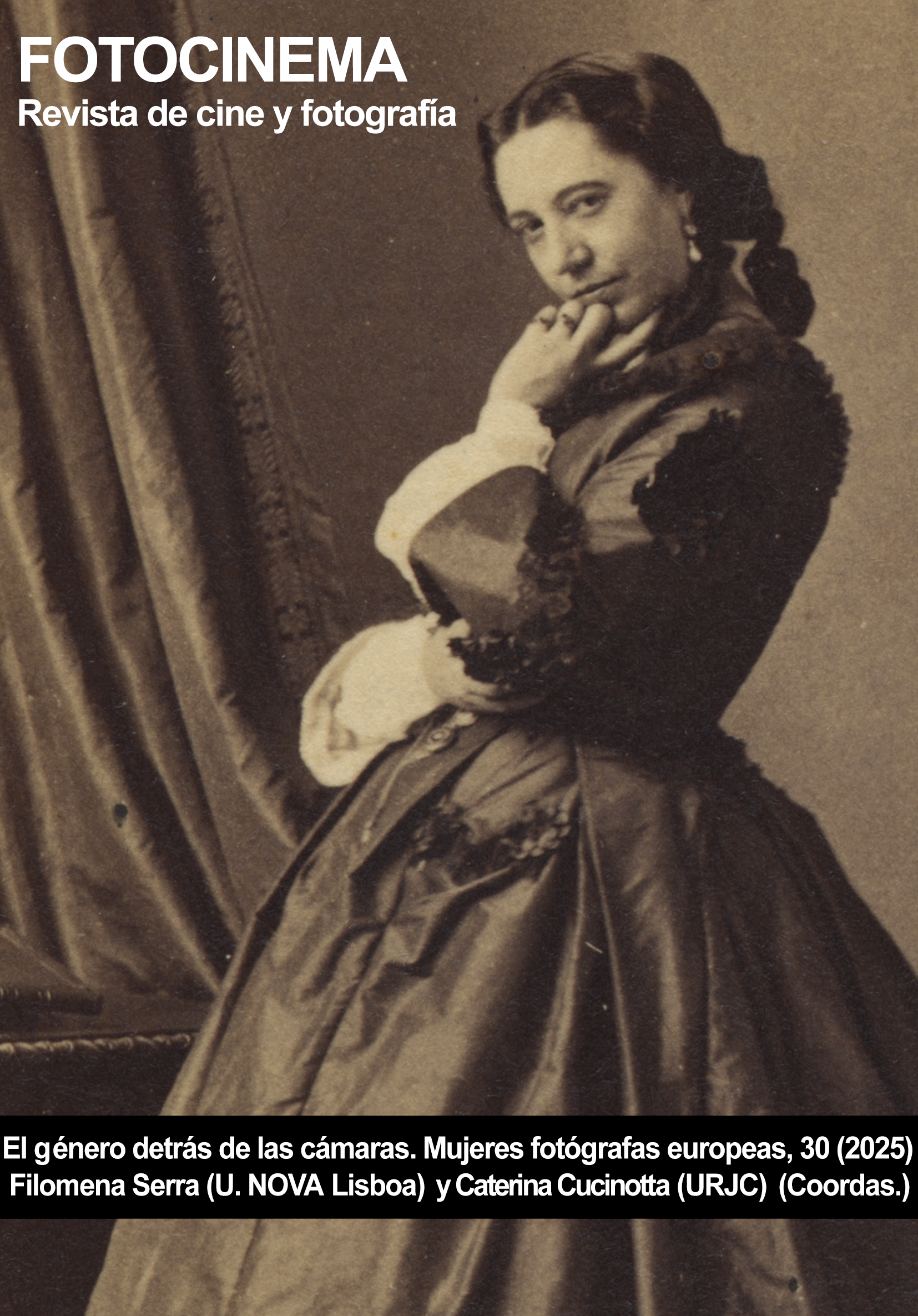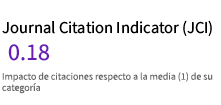Trends in the most recent Spanish cinema. Analysis of film productions between 2011 and 2022
DOI:
https://doi.org/10.24310/fotocinema.30.2025.20614Keywords:
Spanish Cinema, film production and exhibition, film co-productions, women filmmakers, fiction films, documentary filmsAbstract
The last decade of Spanish cinema, despite its proximity, is an area in which it is already possible to enter from a quantitative point of view, so that through certain numbers synergies between the production of films, fiction and documentaries, and exhibition can be revealed. This research has generated a database with all the releases from 2011 to 2022 with the aim of x-raying and interpreting the most significant figures. Thus, the result generated by the data crossing has provided a dynamic vision of the national cinematographic landscape, filling a gap that is still unexploited, while there are many general studies, those that delve into the synergies between different cinemas or those that address the recent Spanish cinematographic panorama year by year in an individualized way, but there are not so many transversal ones that build bridges between production and exhibition, unifying the production figures with their subsequent release. The conclusions drawn from this decade indicate that this is a period of inertia stemming from the richest inter-millennial period, a period of stagnation
Downloads
Metrics
References
AIMC (2020). Marco General de los Medios en España. https://www.aimc.es/a1mc-c0nt3nt/uploads/2020/01/marco2020.pdf
Altman, R. (1984). A Semantic/Sintactic Approach to Film Genre. Cinema Journal, 23(3), 6-18.
Álvarez Monzoncillo, J. M. y López Villanueva, J. (2006). El audiovisual español: Nuevas oportunidades en el exterior. En Bustamante, E. (Ed.). La situación de la industria cinematográfica española: políticas públicas ante los mercados digitales (pp. 115-131). Fundación Alternativas.
Álvarez Monzoncillo, J. M. y López Villanueva, J. (2011). Informe sobre el estado de la cultura española y su proyección global 2011. Marcial Pons.
AMC Networks (2021). Los españoles y el cine: estudio sobre hábitos y preferencias cinematográficas. https://amcnetworks.es/noticias/amc-networks/la-ciencia-ficcion-y-las-sagas-lideran-las-preferencias-cinematograficas-de-los-espanoles/
Augros, J. (2000). El dinero de Hollywood: Financiación, producción, distribución y nuevos mercados. Paidós Ibérica.
Bernal-Triviño, A. (2023). Aportación del formato talk show y documental en el relato de la violencia machista. La denuncia televisada de Ana Orantes y Rocío Carrasco. Comunicación y Género, 6(2), 101-111.
Clemente Mediavilla, J. y García Fernández, E.C. (2016). Contribución de los sitios web de la industria cinematográfica española a la percepción del Cine Español. ZER, 21(40), 67-83. https://doi.org/10.1387/zer.16410
Coronado Ruiz, C. (2022a). Más mujeres en el cine: CIMA y su trabajo en positivo para cambiar lo negativo. Área Abierta, 22(2), 155-171, https://dx.doi.org/10.5209/arab.79078
Coronado Ruiz, C. (2022b). Impulsando el talento femenino. Nuevas directoras en el cine español del siglo XXI. Visual Review, 12 (1), 2-13. https://doi.org/10.37467/revvisual.v9.3708
Cuadrado, M., Ruiz, M.E. y Montoro, J.D. (2013). Factores inhibidores de asistencia a las salas de cine. un análisis regional a través de un algoritmo CHAID. Revista de la Asociación Helénica de Ciencia Regional, 4(1), 55-66.
Cuenca Suárez, S. (2022). "La representatividad de las mujeres en el sector cinematográfico del largometraje español”. Cima. https://cimamujerescineastas.es/informe-cima-2018-la-representatividad-de-las-mujeres-en-el-sector-cinematografico/
Deltell Escolar, L., Clemente Mediavilla, J. y García Fernández, E.C. (2016). Cambio de rumbo. Percepción del cine español en la temporada 2014. Pensar la Publicidad, 10, 77-89. http://dx.doi.org/10.5209/PEPU.53775
De Vega de Unceta, A. (2018). La percepción del cortometraje por los profesionales del cine español. Fotocinema, 17, 429-456. https://doi.org/10.24310/Fotocinema.2018.v0i17.5122
Díaz-González, M. J. (2016): Política cultural y crisis económica: algunas reflexiones a propósito de la reforma de la Ley del Cine. Icono 14, 14 (2), 182-203. https://doi.org/10.7195/ri14.v14i2.975
FAPAE (2012). Memoria Anual 2011. https://blogs.uji.es/rtvv/files/2014/01/MemoriaFapae2011.pdf
Fernández Blanco, V. M. (1996). Documentos de trabajo, 118. Universidad de Oviedo. https://econo.uniovi.es/biblioteca/documentos-trabajo-ccee-ee/1996
Fontaine, G. y Simone, P. (2020). Female directors and screenwriters in European film and audiovisual fiction production. European Audiovisual Observatory.
Fuertes, S. (1998). Entrevista con Enrique González Macho, El País, suplemento Babelia, 4.
García Fernández, E.C., Reyes Moreno, M. y Clemente Mediavilla, J. (2014). Público y cine en España. Problemas de identidad y marca para un cine propio. Estudios sobre el Mensaje Periodístico, 20(2), 695718.
García Santamaría, J. V. (2012). La reinvención de la exhibición cinematográfica: centros comerciales y nuevas audiencias de cine. Zer, 17(32), 107-119.
Gil Ruiz, F., Gil-Alana, L., Hernández-Herrera, M. y Ayestaran Crespo, R. (2024). A Look at the Spanish Film Industry and its Level of Persistence. Humanities and Social Sciences Communications, 11 (66), 1-11. https://doi.org/10.1057/s41599-023-02563-4
Heredero Díaz, O. y Reyes Sánchez, F. (2017). Presente y futuro de las subvenciones a la industria cinematográfica española. Fotocinema, 14, 341-363. https://doi.org/10.24310/Fotocinema.2017.v0i14.3604
Kogen, L. (2005). The Spanish Film Industry: New Technologies, New Opportunities. Convergence, 11(1), 68-86. https://doi.org/10.1177/135485650501100106
Ley 13/2022, de 7 de julio, General de Comunicación Audiovisual (2022). Boletín Oficial del Estado (BOE), 163, 8 de julio. https://www.boe.es/buscar/act.php?id=BOE-A-2022-11311
Ley 55/2007, de 28 de diciembre, del Cine (2007). Boletín Oficial del Estado (BOE), 312, 29 de diciembre. https://www.boe.es/buscar/act.php?id=BOE-A-2007-22439
López-González, J. (2008). Ley del Cine 2007. En C. Padrós, y J. López-Sintas (Dirs.), Estudios sobre Derecho y Economía del cine. Adaptado a la Ley 55/2007 del cine (pp. 177-207). Atelier Libros Jurídicos.
Medina de la Viña, E. y Fernández García, J. (2014). Nuevo cine español: cine, cine, cine, más cine, por favor. Fonseca Journal of Communication, 9, 85-117.
Ministerio de Cultura y Deporte (2019). Encuesta de Hábitos y Prácticas Culturales en España 2018-2019. https://www.cultura.gob.es/dam/jcr:fe7a20bc-a18d-4d1c-9376-77dc684b5dd8/encuesta-de-habitos-y-practicas-culturales-2018-2019.pdf
Monterde, J. E. (2019). La producción cinematográfica. Elementos para la reflexión. En C. F. Heredero (Ed.), Industria del cine y el audiovisual en España. Estado de la cuestión. 2015-2018. Festival de Cine de Málaga e Iniciativas Audiovisuales, 23-114.
Neale, S. (1990). Questions of Genre. En O. Boyd–Barret y Ch. Newbold (Eds.), Approaches to Media: A Reader. Arnold.
Pena, J. (2002). Cine español de los noventa. Hoja de reclamaciones. Secuencias: Revista de historia del cine, 16, 38-53.
Perales Bazo, F. y Marín Montín, J. (2012). La exhibición cinematográfica en el contexto ibérico. Tendencias actuales y futuras. Icono14, 10(1), 94-104. https://doi.org/10.7195/ri14.v10i1.138
Pérez, X. (2015). La convergencia del cine con la televisión: esquemas de producción, financiación por las cadenas privadas, trasvases profesionales. adComunica. Revista Científica de Estrategias, 10, 157-162.
Pérez Rufí, J. P. (2012). La tormenta perfecta del cine español. La situación de la industria cinematográfica en España. Razón y Palabra, 81, 146-162.
Real Decreto-ley, el 6/2015, de 14 de mayo, por el que se modifica la Ley 55/2007, de 28 de diciembre, del Cine (2015). Boletín Oficial del Estado (BOE), 116, 15 de mayo. https://www.boe.es/buscar/doc.php?id=BOE-A-2015-5368
Real Decreto 1084/2015, de 4 de diciembre, por el que se desarrolla la Ley 55/2007, de 28 de diciembre, del Cine (2015). Boletín Oficial del Estado (BOE), 291, 5 de diciembre. https://www.boe.es/buscar/act.php?id=BOE-A-2015-13207
Rubio Arostegui, J. A. y Rius-Ulldemolins, J. (2018). Cultural Policies in the South of Europe after the Global Economic Crisis: Is there a Southern model within the framework of European convergence? International Journal of Cultural Policy, 26 (1), 16-30. https://doi.org/10.1080/10286632.2018.1429421
Sánchez Noriega, J. L. (Ed). (2020). Cine español en la era digital: Emergencias y Encrucijadas. Laertes.
Downloads
Published
How to Cite
Issue
Section
License
Copyright (c) 2025 Virginia Guarinos, Ernesto Pérez Morán

This work is licensed under a Creative Commons Attribution-NonCommercial-NoDerivatives 4.0 International License.
All contents published in Fotocinema Revista científica de cine y fotografía are protected under the Creative Commons Attribution-NonCommercial-ShareAlike 4.0 International (CC BY-NC-SA 4.0) license. All about this license is available in the following link: <http://creativecommons.org/licenses/by-nc-sa/4.0>
Users can copy, use, redistribute, share and exhibit publicly as long as:
- The original source and authorship of the material are cited (Journal, Publisher and URL of the work).
- It is not used for comercial purposes.
- The existence of the license and its especifications are mentioned.
There are two sets of authors’ rights: moral and property rights. Moral rights are perpetual prerogatives, unrenounceable, not-transferable, unalienable, imprescriptible and inembargable. According to authors’ rights legislation, Fotocinema. Revista científica de cine y fotografía recognizes and respects authors moral rights, as well as the ownership of property rights, which will be transferred to University of Malaga in open access. The property rights are referred to the benefits that are gained by the use or the dissemination of works. Fotocinema. Revista científica de cine y fotografía is published in an open access form and it is exclusively licenced by any means for doing or authorising distribution, dissemination, reproduction, , adaptation, translation or arrangement of works.
Authors are responsable for obtaining the necessary permission to use copyrighted images.













13.png)



